Balanced training with AdamW
Efficient AI Model Training with PyTorch

Dennis Lee
Data Engineer
Efficient training

Optimizers for training efficiency

Optimizers for training efficiency

Optimizers for training efficiency

Optimizer tradeoffs
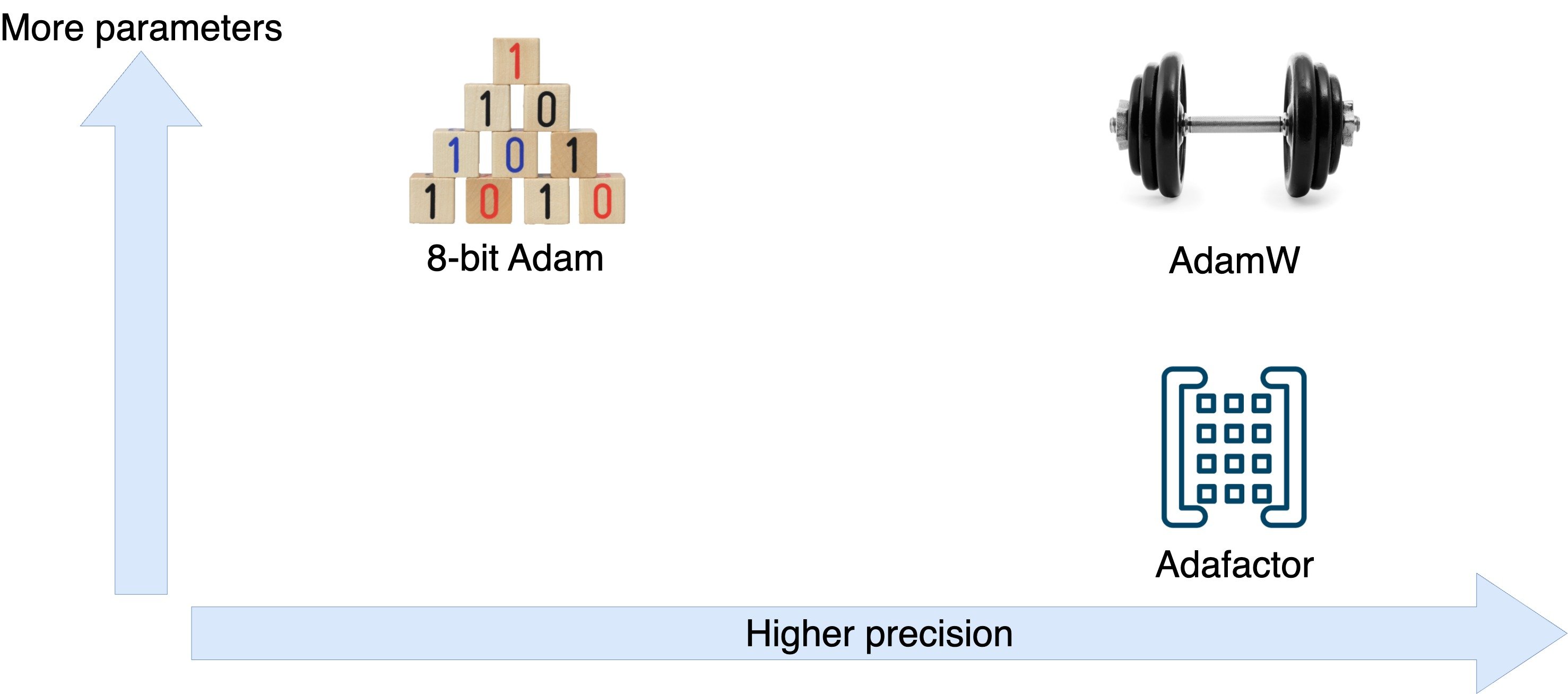
Optimizer tradeoffs
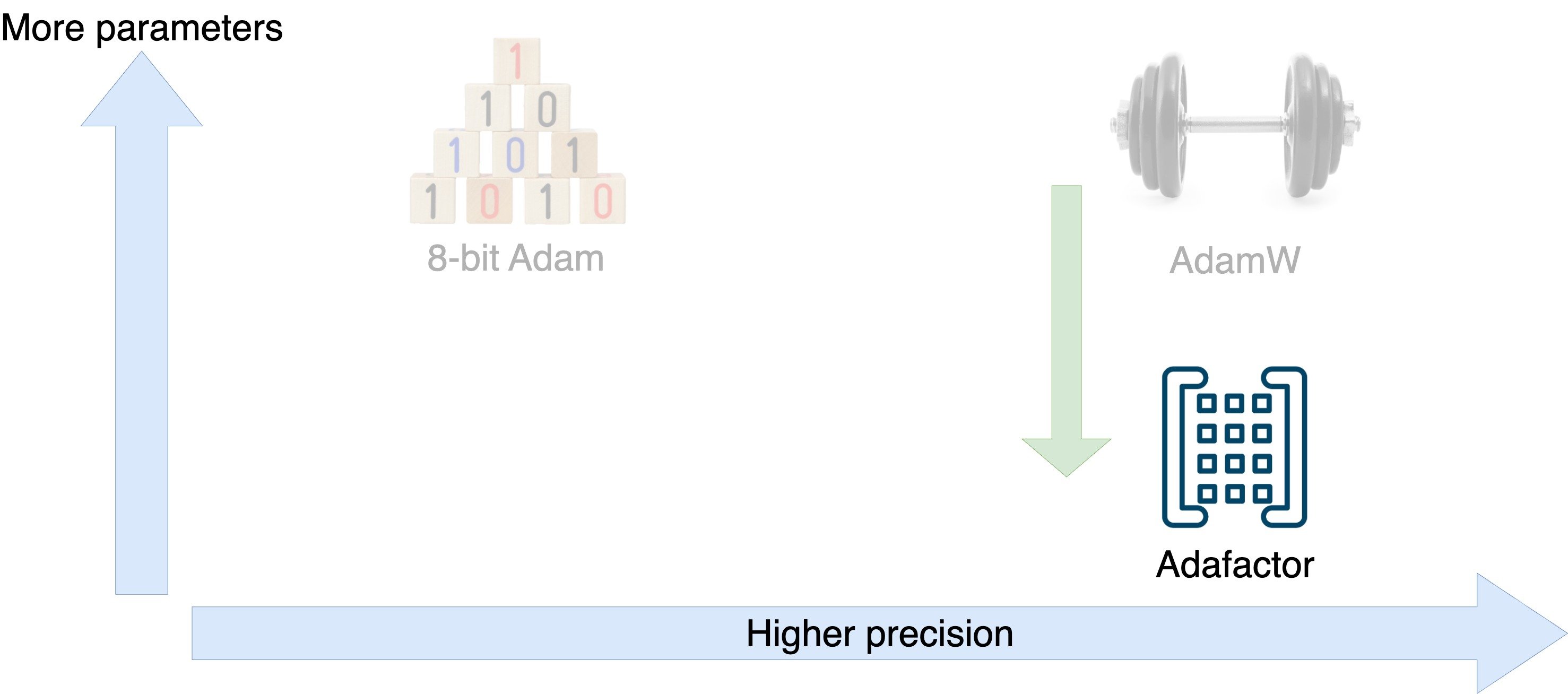
Optimizer tradeoffs
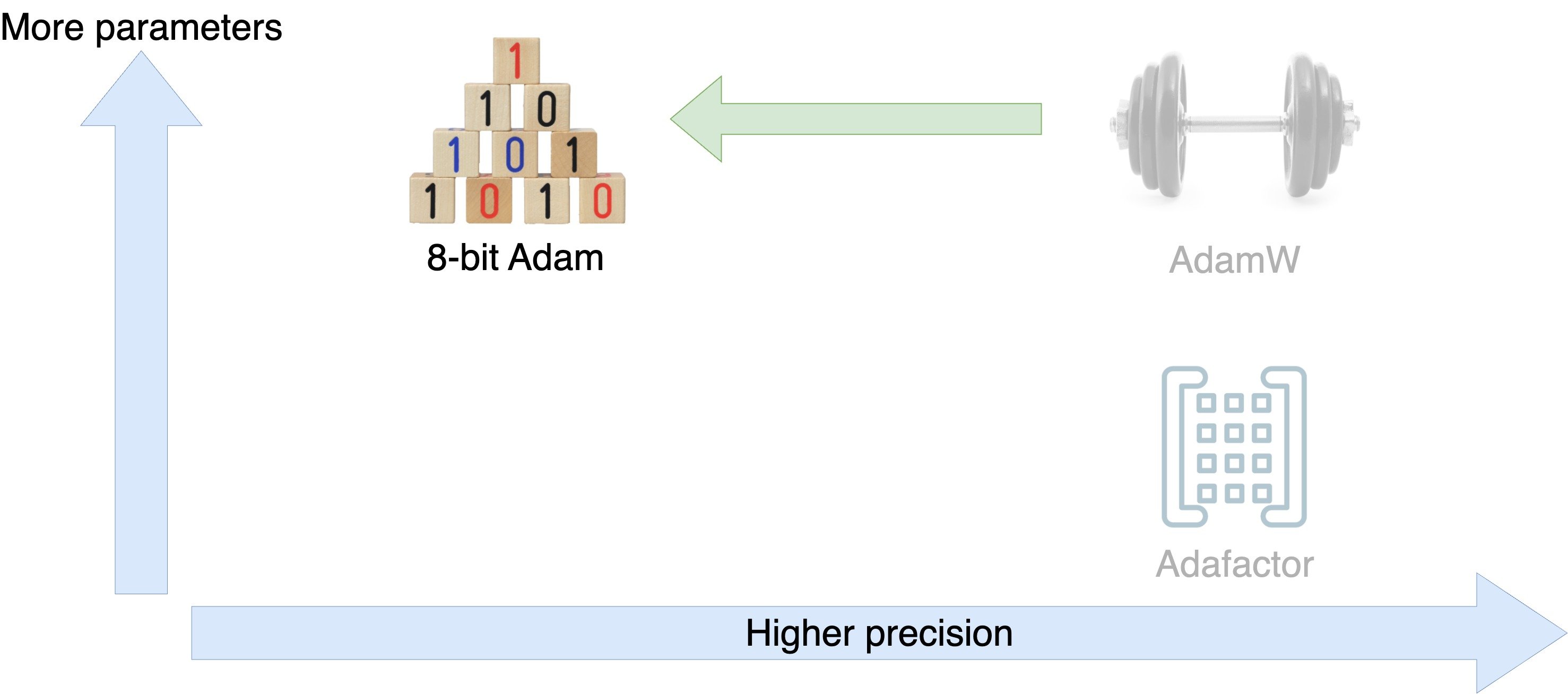
Optimizer tradeoffs
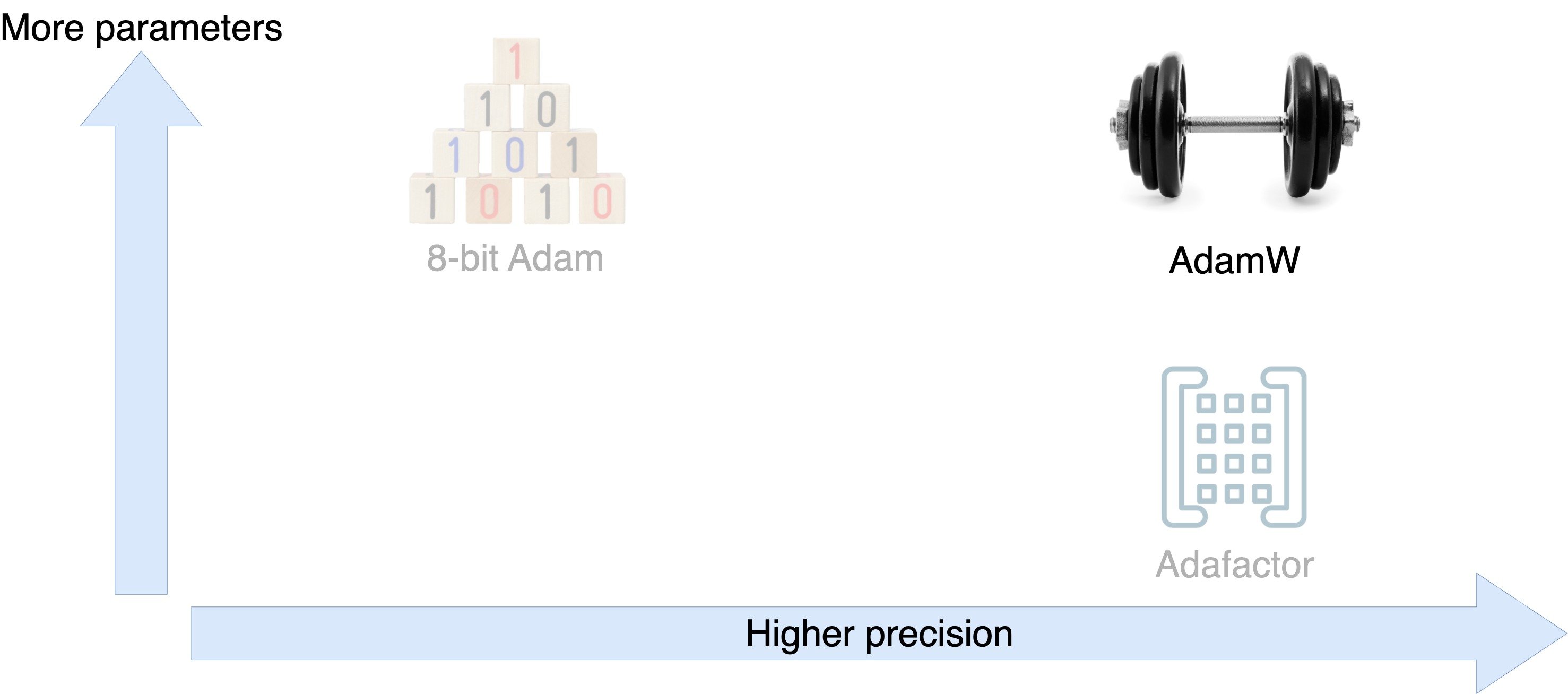
How does AdamW work?

How does AdamW work?

How does AdamW work?

- Compute the exponential moving average (EMA) of the gradients
How does AdamW work?

- Compute the exponential moving average (EMA) of the gradients
- Compute EMA of squared gradients
How does AdamW work?

- Compute the exponential moving average (EMA) of the gradients
- Compute EMA of squared gradients
How does AdamW work?

- Compute the exponential moving average (EMA) of the gradients
- Compute EMA of squared gradients
Memory usage of AdamW
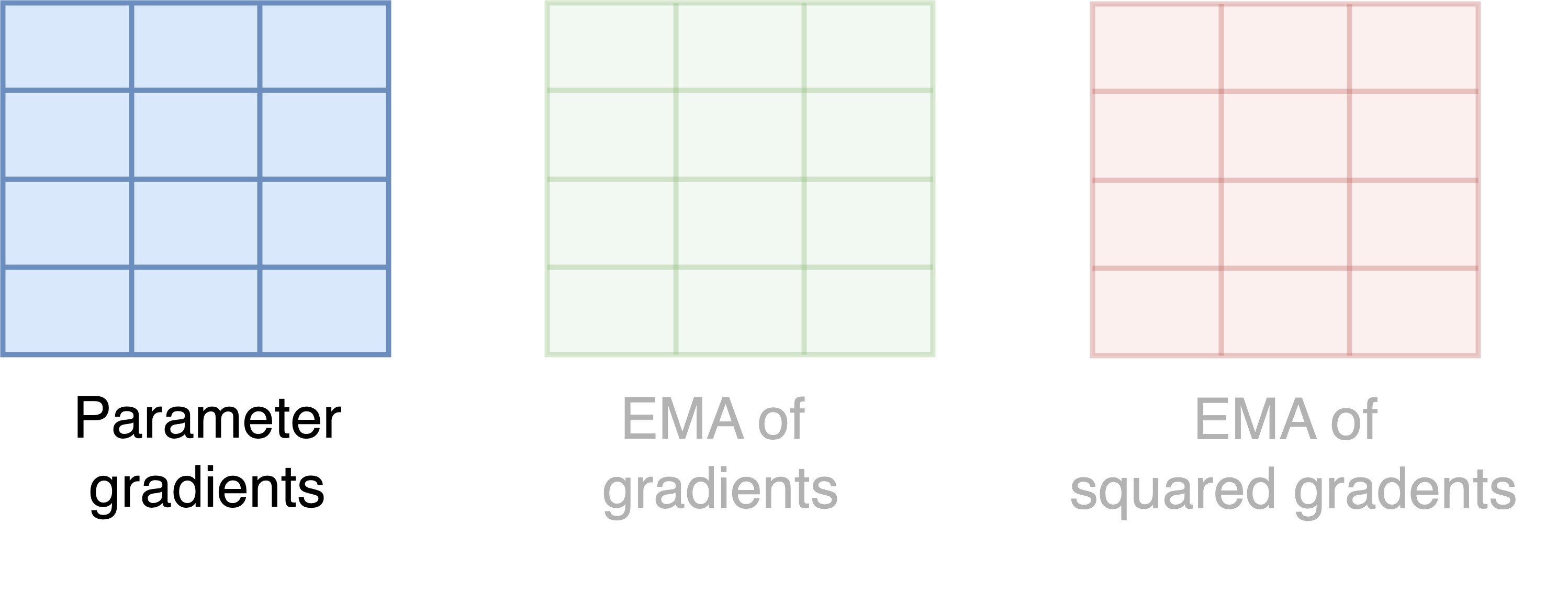
- Each square is a parameter, and each color is a state
Memory usage of AdamW
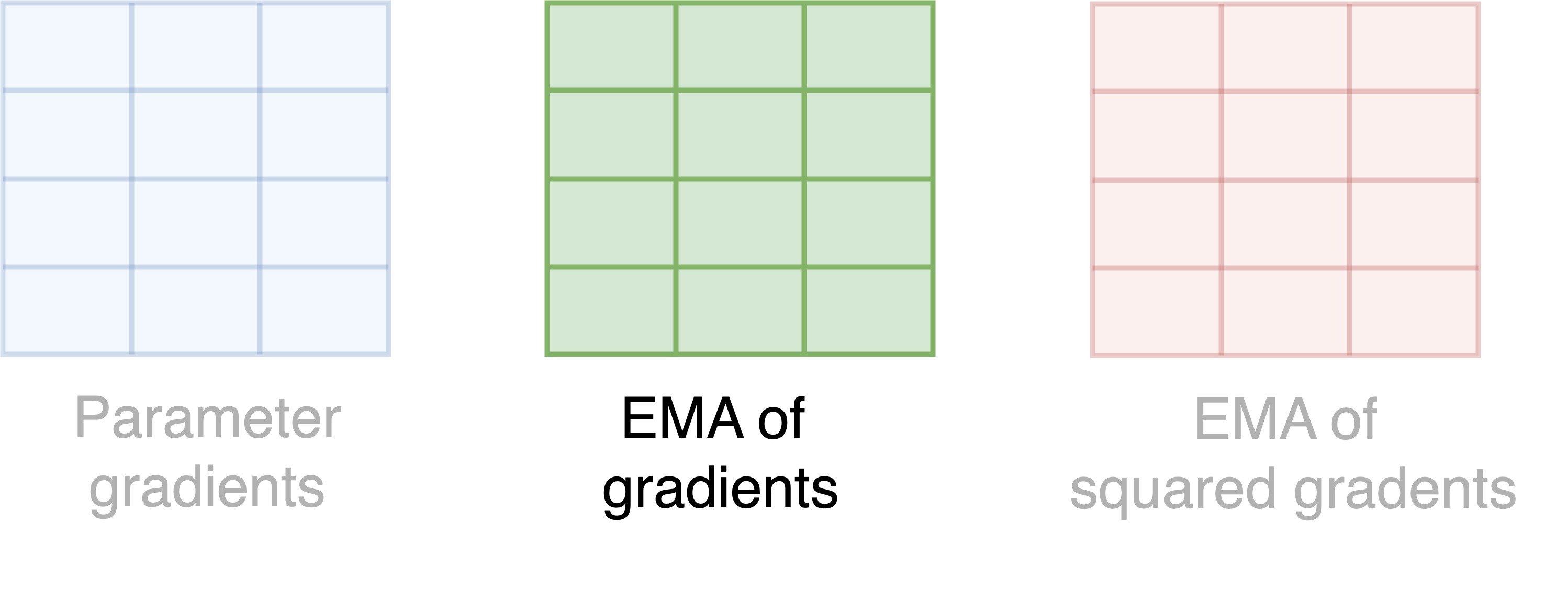
- Each square is a parameter, and each color is a state
Memory usage of AdamW
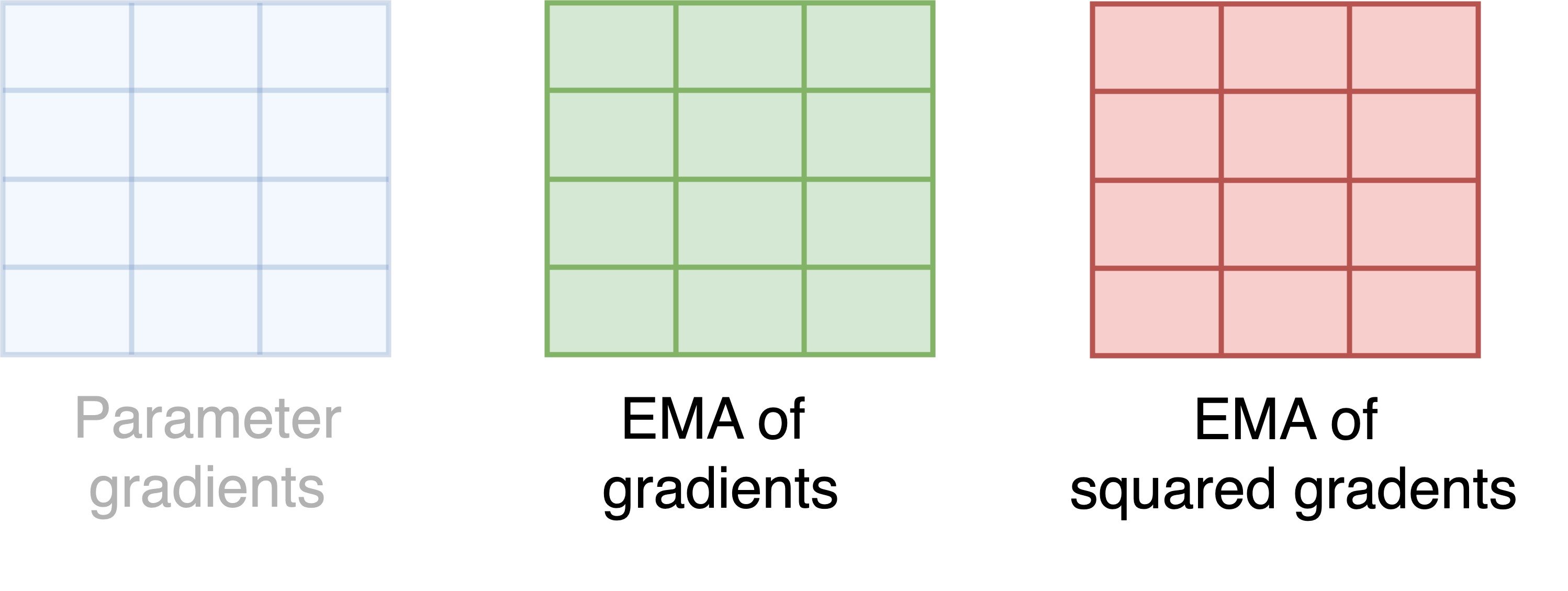
- Each square is a parameter, and each color is a state
- Memory per parameter = 8 bytes = 4 bytes per state * 2 states
- Total memory = Memory per parameter (8 bytes) * Number of parameters
Estimate memory usage of AdamW
model = AutoModelForSequenceClassification.from_pretrained( "distilbert-base-cased", return_dict=True)num_parameters = sum(p.numel() for p in model.parameters()) print(f"Number of model parameters: {num_parameters:,}")
Number of model parameters: 65,783,042
estimated_memory = num_parameters * 8 / (1024 ** 2)
print(f"Estimated memory usage of AdamW: {estimated_memory:.0f} MB")
Estimated memory usage of AdamW: 502 MB
Trainer and Accelerator
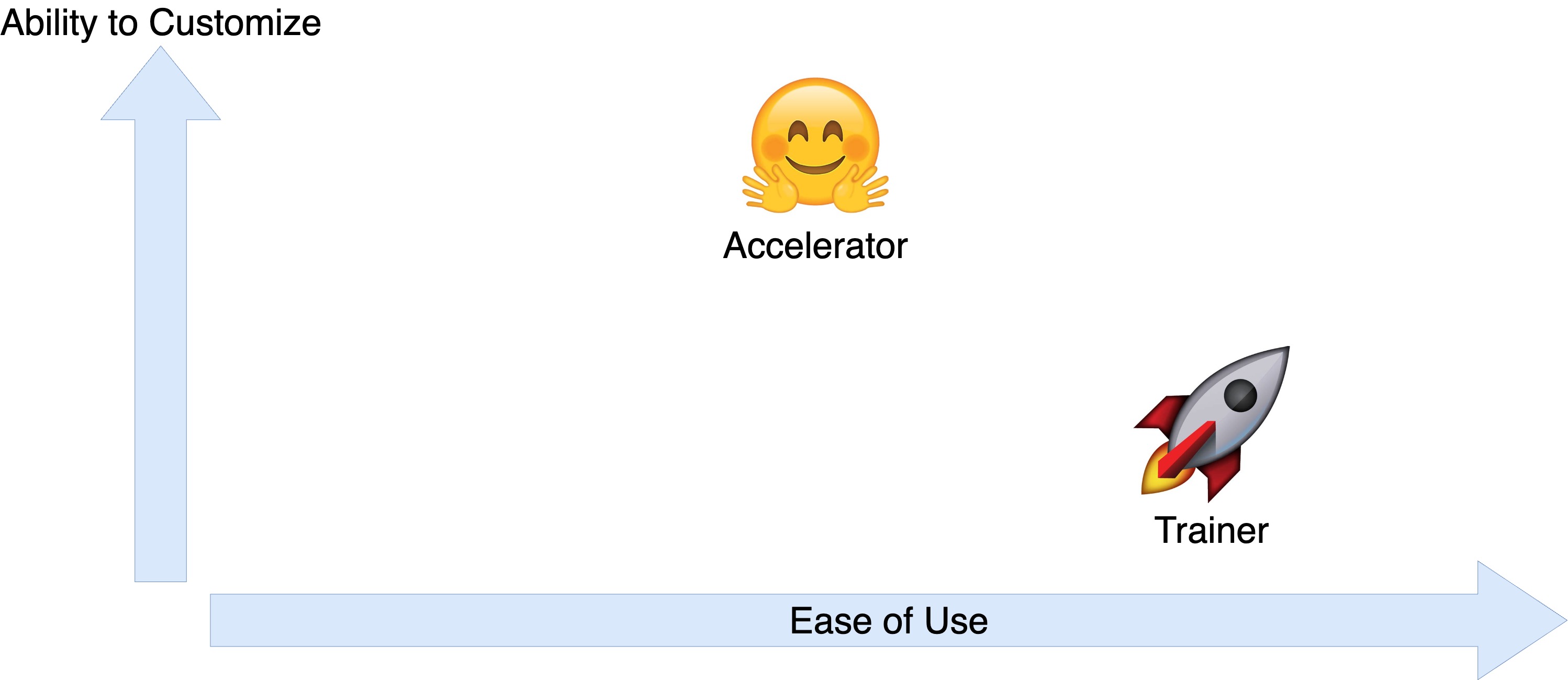
Implement AdamW with Trainer
from torch.optim import AdamW optimizer = AdamW(params=model.parameters())trainer = Trainer(model=model, args=training_args, train_dataset=train_dataset, eval_dataset=validation_dataset, compute_metrics=compute_metrics, optimizers=(optimizer, lr_scheduler))trainer.train()
{'epoch': 1.0, 'eval_accuracy': 0.7, 'eval_f1': 0.8}
Implement AdamW with Accelerator
from torch.optim import AdamW optimizer = AdamW(params=model.parameters())for batch in train_dataloader: inputs, targets = batch["input_ids"], batch["labels"] outputs = model(inputs, labels=targets) loss = outputs.loss accelerator.backward(loss) optimizer.step() lr_scheduler.step() optimizer.zero_grad() print(f"Loss = {loss}")
Loss = 0.7
Inspecting the optimizer state
optimizer_state = optimizer.state.values()
print(optimizer_state)
dict_values([{'step': tensor(3.),'exp_avg': tensor([[0., 0., 0., ..., 0., 0., 0.], ...]),'exp_avg_sq': tensor([[0., 0., 0., ..., 0., 0., 0.], ...])}, ...])
Computing the optimizer size
def compute_optimizer_size(optimizer_state): total_size_megabytes, total_num_elements = 0, 0for params in optimizer_state:for name, tensor in params.items(): tensor = torch.tensor(tensor)num_elements = tensor.numel()element_size = tensor.element_size()total_num_elements += num_elementstotal_size_megabytes += num_elements * element_size / (1024 ** 2)return total_size_megabytes, total_num_elements
Computing the optimizer size
total_size_megabytes, total_num_elements = \
compute_optimizer_size(trainer.optimizer.state.values())
print(f"Number of optimizer parameters: {total_num_elements:,}")
Number of optimizer parameters: 131,566,188
print(f"Optimizer size: {total_size_megabytes:.0f} MB")
Optimizer size: 502 MB
Let's practice!
Efficient AI Model Training with PyTorch

